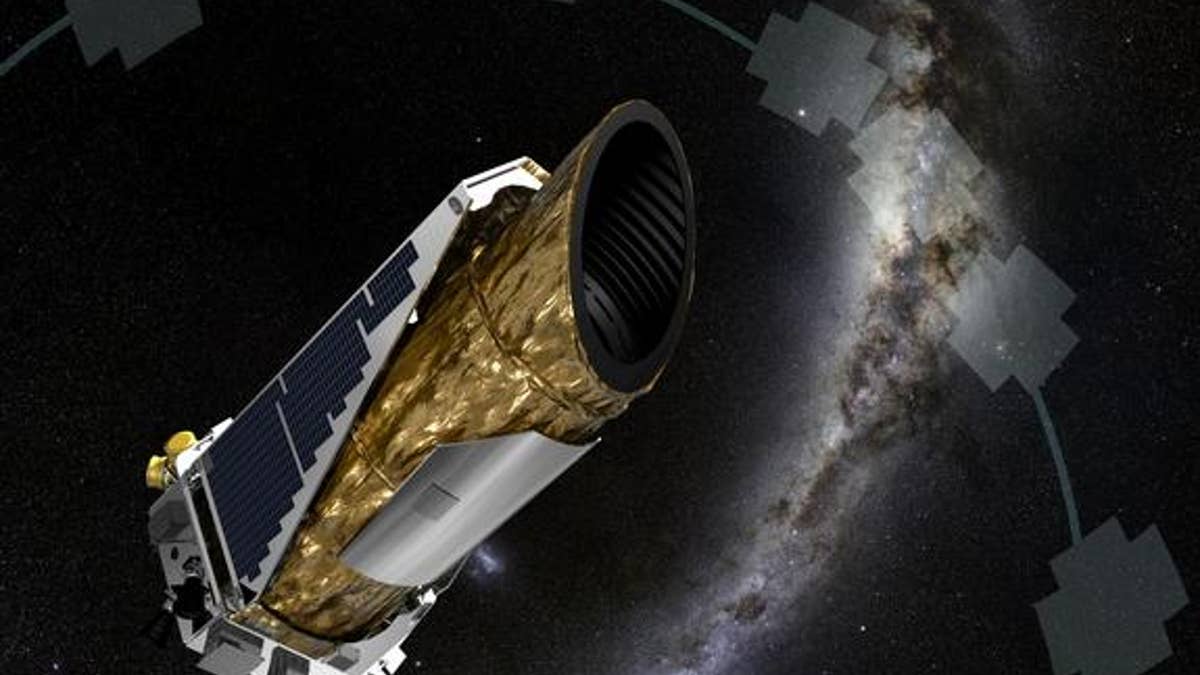
The artist's illustration shows NASA's planet-hunting Kepler spacecraft operating in its second-chance K2 mission. (NASA Ames/JPL-Caltech/T Pyle)
KISSIMMEE, Fla. — NASA's Kepler spacecraft has bounced back nicely from the malfunction that ended its original exoplanet hunt more than two years ago.
Kepler has now discovered more than 100 confirmed alien planets during its second-chance K2 mission, researchers announced Jan. 5 here at the 227th Meeting of the American Astronomical Society (AAS).
The $600 million Kepler mission launched in March 2009, tasked with determining how commonly Earth-like planets occur throughout the Milky Way galaxy. Kepler has been incredibly successful, finding more than 1,000 alien worlds to date, more than half of all exoplanets ever discovered. [Gallery: A World of Kepler Planets]
The spacecraft finds planets by the "transit method," noting the tiny brightness dips caused when a planet crosses its host star's face from Kepler's perspective. This technique requires extremely precise pointing, an ability Kepler lost in May 2013 when the second of the observatory's four orientation-maintaining reaction wheels failed.
But the Kepler team quickly figured out a way to keep the telescope stable, using solar radiation pressure as a sort of third wheel. That meant the spacecraft could eye different patches of the sky for around 80 days at a time to search for planets and other cosmic bodies and phenomena. That's what Kepler has been doing in its K2 mission, which NASA greenlit in May 2014.
Researchers had expressed hope that K2 could pick up some additional exoplanets and interesting structures in the sky. The extended mission has certainly delivered, spotting a few dozen confirmed planets, and now the tally will jump dramatically.
The first five K2 campaigns, which each looked at a different part of the sky, "have produced over 100 validated planets," Ian Crossfield, an astronomer at University of Arizona, said today during a presentation at the AAS meeting. "This is a validation of the whole K2 program's ability to find large numbers of true, bona fide planets."
Crossfield said that Kepler observed more than 60,000 stars and found 7,000 transitlike signals during the first five 80-day observation campaigns. A validation process whittled some of these signals down to planet candidates, and then finally to validated planets, each of which has just a 1 percent chance of being a false positive, Crossfield added.
He also noted that K2 found more false positives among larger planets than small ones, and that more than half of the false positives were in multiplanet systems.
While planning K2, Kepler principal investigator Bill Borucki, who retired this past July after a 53-year NASA career, said the new mission could find "dozens, or maybe even hundreds" of exoplanets. Now, K2 has racked up more than 100, and lots of exciting extrasolar systems will likely be spotted in the future, Crossfield said.
"We're only a quarter or so of the way done, we hope," he said.
